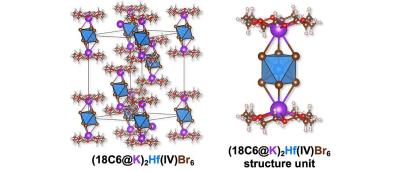Researchers at Lawrence Berkeley National Laboratory (Berkeley Lab), led by Prof. Peidong Yang, have developed a new 3D printing ink based on perovskite materials, that exhibits near unity photoluminescence quantum yield (PLQY). Interestingly, as it is a 3D printable ink, it is possible to create luminescent objects from it, as seen in the image below:

Eiffel Tower luminescent structures, made from 3D-printed supramolecular ink (Berkeley Lab)
The researchers brand the new ink as 'supramolecular ink', and say it is produced without any rare metals. It is a combination of several powders containing hafnium (Hf) and zirconium (Zr), and is made at room temperatures. In a process called supramolecular assembly, tiny molecular building block structures are self-assembled within the ink. These supramolecular structures enable the material to achieve stable and high-purity synthesis at low temperatures.
The ink composite materials are highly efficient emitters of blue and green light. Optical experiments reveal that the ink exhibits what scientists call near-unity quantum efficiency. Basically it means that it converts nearly all absorbed light into visible light during the emission process.

Supramolecular ink perovskite structure (Berkeley Lab)
The new ink can be used to create 3D OLED lighting device. In addition, it's high PL efficiency could lead to its adoption as a color-conversion material (used in both LCDs and QD-OLEDs).
The researchers are now starting to explore the material's electroluminescence potential - which is even more exciting as it could lead to its adoption as an OLED emitter.



